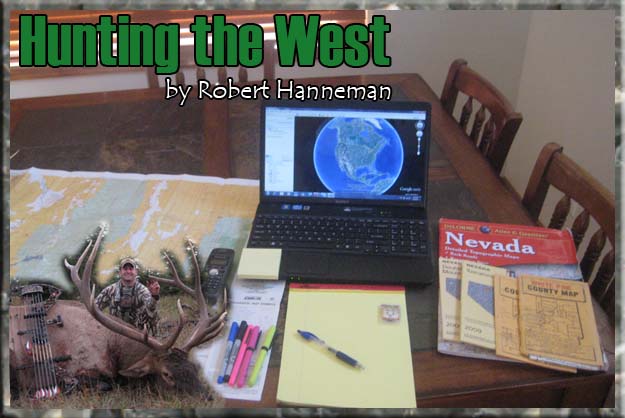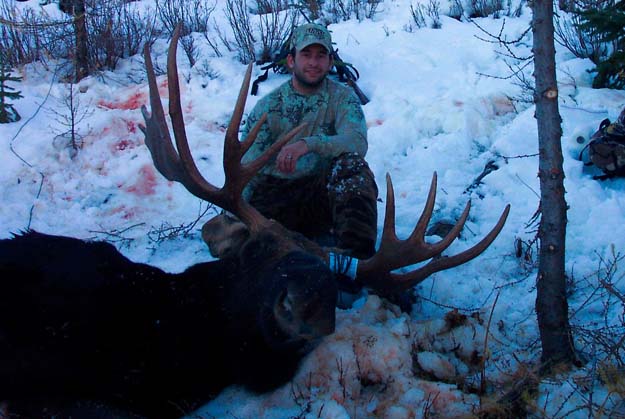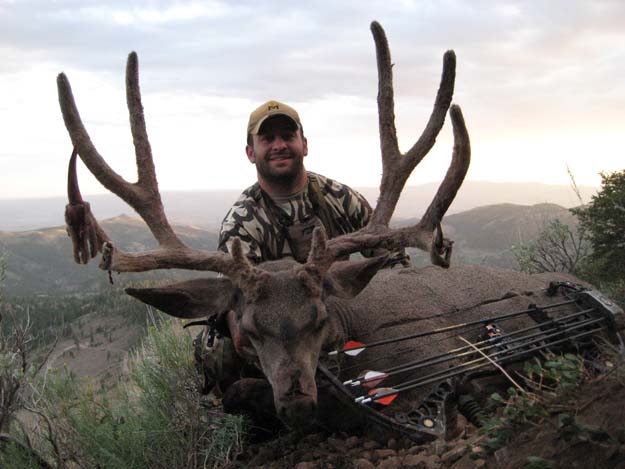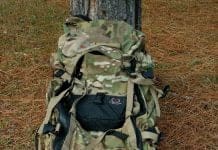Hunting the West
By Robert Hanneman
For this article I am referring to what I put into a hunt from before the tag is obtained, to the harvest of the animal or end of the season. First, you must obtain your tag which is usually done through a draw. Putting in for and drawing great tags is my secret to killing trophy animals. I have been applying for tags in multiple states for the last sixteen years, and I have had many tag draw opportunities over the years. I would encourage everyone to apply in the west for every species of big game they want to hunt in their lifetime. Keep building bonus points and someday your name will be on a great tag. Once a tag is drawn then the fun really begins.
 From the moment I find out I have drawn a tag I get as many maps for my area including a GPS chip for the state I am hunting from Montana GPS maps. These chips are incredibly helpful because they show you state and public land as well as private land with the name of the landowner. I also like to try to find the older maps of the area since it is surprising the amount of information that is lost every time a map is updated. Google Earth can be helpful with aerial photos that can be compared to other maps. This is a great way to look for glassing points prior to getting into the area. Next, I go over the state’s website on harvest reports, population surveys, and any other unit information I can find. Then I make the first call to the biologist. Some biologists can be very helpful and others can be tight lipped and don’t want to give out much information. However; the majority of the biologists I have contacted have been extremely helpful.
From the moment I find out I have drawn a tag I get as many maps for my area including a GPS chip for the state I am hunting from Montana GPS maps. These chips are incredibly helpful because they show you state and public land as well as private land with the name of the landowner. I also like to try to find the older maps of the area since it is surprising the amount of information that is lost every time a map is updated. Google Earth can be helpful with aerial photos that can be compared to other maps. This is a great way to look for glassing points prior to getting into the area. Next, I go over the state’s website on harvest reports, population surveys, and any other unit information I can find. Then I make the first call to the biologist. Some biologists can be very helpful and others can be tight lipped and don’t want to give out much information. However; the majority of the biologists I have contacted have been extremely helpful.
Once I become more familiar with the unit, I begin researching through internet forums for more information. This can be a bit of a nightmare and I recommend knowing enough data about the unit before going online because for every helpful thing you learn, there will be ten stories from some guy who knew a guy that hunted the unit and you will be on a wild goose chase. Another great tool is to call the people who have hunted the unit in the last couple of years. Some states will give you a list of prior hunters if you ask. This can be some of the most helpful information you will receive. Most people are very willing to share information for an area that is difficult to draw.
As soon as the background work is complete, I schedule a scouting trip. I always make sure to bring a pair of 15s, 10s, and a spotting scope for scouting open country since optics can cover the country more effectively than on foot. Taking the time to drive all the roads and learn where everything is allows me to get the feel of the land. If I am hunting in the desert, I will check the tracks at every water hole I come across. If the water hole has a lot of tracks around it I might hang a trail camera. The one thing I always do before I leave is brush out all the tracks around any water and write down the date and time I was there for future reference. As I am driving I am always looking for key morning and evening glassing spots. The remainder of my scouting trip is spent glassing in the morning and evenings. The most effective way to glass is with the sun at your back, and this tool alone will make anyone better at glassing. It is amazing to me how many people will glass into the sun.
 The middle of the day is a perfect time to slip away and check water holes or learn new country. Even if I have located a shooter, I am always looking for a backup animal. I also make sure to note the locations and the time of day on all shooters that I see during the scouting trip. I also talk to everyone I run into while scouting. Again, some of these people will be very helpful so it is always worth the time to stop. If I am unable to make a scouting trip to the unit, I will always try to show up at least five days before the season opens and do all of the above.
The middle of the day is a perfect time to slip away and check water holes or learn new country. Even if I have located a shooter, I am always looking for a backup animal. I also make sure to note the locations and the time of day on all shooters that I see during the scouting trip. I also talk to everyone I run into while scouting. Again, some of these people will be very helpful so it is always worth the time to stop. If I am unable to make a scouting trip to the unit, I will always try to show up at least five days before the season opens and do all of the above.
After returning from the scouting trip, I will then make a second call to the biologist and ask any questions I have from my scouting trip. Every time I have scouted an area I always end up with a couple of questions about access, water, livestock, etc. I have found that most biologists are willing to give you a lot more information after you have spent time in the unit. Having maps and a notepad handy when talking to the biologist allows me take notes and highlight areas on my maps during our conversation. I also never share the location of the shooters I have found when talking with anyone. That sounds like common sense, but to tell you the truth, common sense is not that common any more.
Before opening day rolls around, I have usually located a couple of shooter animals and I will show up 2-3 days before the season and try to relocate them. If I did not find any shooters while scouting, I will show up 4-5 days before my hunt opens and start the whole process again. The first couple of days before the season, people are scarce, but the night before opening day people start to arrive. It happens every year and it is something all people who hunt public land have to deal with. I have had people put in camps in the exact locations where I was watching a shooter. Something to remember is that when watching a shooter close to a road, try to figure out his escape route and what new country he will be moving into. Every animal will respond differently to the increased pressure in the area. Another thing to remember about these kinds of hunts is that each tag holder usually has three to seven friends out helping with the hunt. So if there is twenty tags expect that at least sixty people are in the area.

Things don’t always go as planned and sometimes the shooter may have moved out of the area or someone else may have killed him. At this point, I go into what I call “scouting with a weapon” mode. I move around to areas that are less accessible and areas that are overlooked by other hunters. In overlooked areas of desert country, I have found big old bucks living out on the flats, miles away from the mountains.
If there is one piece of advice I can give to other public land hunters is to not be discouraged if you come up unsuccessful at the beginning of the season. Most of the opening day hunters will be gone by Sunday night. I see this all the time where a guy puts in his time scouting and hunting but after a couple of days he is ready to give up and go home or shoot a lesser quality animal because he has not found what he is looking for. It is funny how the human mind works. We all hear people talking about being in top physical condition in order to succeed in hunting but we rarely hear about being in top mental condition. Being in top mental condition is more important to me than being in top physical condition. If you are in top mental condition, you can handle any curve ball that is thrown your way. Never give up and hunt hard until your last day. Respect yourself for the effort you made from applying for the tag to hunting and your hunt will be a success, no matter if you harvest an animal or not.



















